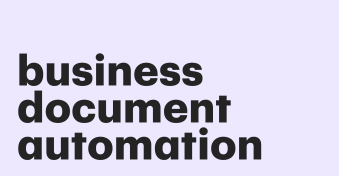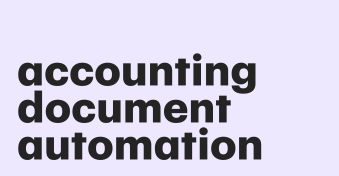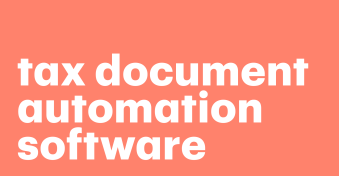We’re willing to bet that when you hear the term “financial document automation” you’re tempted to yawn.
But you’ll be surprised to hear that contact management, especially in the realm of document automation solutions, is anything other than yawn-worthy.
Here’s why.
Financial document automation isn’t straightforward – it’s dynamic.
Terms, dates, workflow, document processing, and pricing are constantly changing.
If you’re not on top of these specifics, it could mean unnecessary spending or even potential legal problems for your company.
What is financial document automation?
In the financial services industry, using software to automate document creation is a smart idea.
Financial document automation is a phrase you may hear thrown around and it’s a lot like what it sounds.
It refers to a better, smarter, and faster way of signing contracts, storing documents, assigning workflows, and simplifying every step of the process.
With financial document automation, a company typically licenses software used to create, manage, distribute, and automate finance documents, including contracts, letters, invoices, and reports.
Plus, intelligent document generation in the finance industry can help you create audit trails, get documents signed by a notary, and make new documents using templates.
Leaning into this specific type of document automation, which leverages the power of machine learning, you can better streamline your workflows and reduce manual data entry and costly mistakes.
Benefits of document automation for financial services
1. Increased productivity and profitability
This is sort of a no-brainer but when you automate complex documents, you cut down on human errors. Plus, you can save loads of time doing time-consuming tasks like consolidating financial statements
2. Version control and consistency
Document automation offers real-time visibility into your intelligent documents, helping you see how things are progressing and reducing the risk of costly mistakes.
3. Improved compliance and auditability
Document automation offers you increased functionality so you can work with several templates and keep all disclosures, approvals, and signatures in one place.
Challenges of document automation and how to overcome them
1. Data security and privacy concerns
When you use an esignature solution like PandaDoc, you can rest assured that your document is safe, secure, and backed with the highest level of security – PandaDoc’s e-Signature is E-SIGN, UETA and HIPAA compliant.
It’s also backed by SOC 2 certification so you can sign with total confidence.
2. Integration with legacy systems
PandaDoc offers seamless integrations with third-party CRMs like HubSpot, Salesforce so you can pass data easily back and forth, while maintaining consistency.
Plus, PandaDoc API features a broad spectrum of functionality to empower you to create workflows within your products.
3. Cost of implementation and maintenance
The main cost you will have to consider when it comes to financial document automation is a software license fee or a monthly or yearly subscription fee.
You should also consider what level of post-implementation support the company will provide if you have questions on maintaining the service.
Now is the perfect time to take inventory of how you handle your financial contracts so you stay on top of everything and provide excellent customer experience.
Not everyone has had their AHA moment when it comes to financial document automation
Truth be told, you may find it surprising that finance departments, especially those in tech companies or large enterprises don’t leverage the power of financial document automation software.
And every year, especially with the help of AI, digital transformation gets better.
It’s a curious thing as to why more finance teams aren’t embracing better financial contract management methods.
Here’s a theory: People (especially in finance) are fooled to believe that a more complicated system = a system that you can sign up for and forget.
If only that were true.
Here’s the bottom line: There’s a misconception that the biggest and most expensive tool will automatically fix your processes, but here’s the real twist: you have to fix the process first, before anything else can improve.
Imagine you’re working on 200+ financial documents, but they are scattered across random emails, inboxes, Slack channels, and maybe even on your CEO’s phone.
Financial document automation can save your team hundreds of hours searching to find contracts and get deals renewed, reviewed, and processed.
If you’re starting at square one, accept defeat and then ask yourself the following
If you’re coming to terms with the fact that your financial contracts are more disorganized than your shoe collection, don’t sweat it.
Think of this as a reckoning moment. From here on out, you are going to promise to do better – not only for your own sanity but for the protection and growth of your company.
Without full visibility, accountability, and controls placed on contracts things can spiral out of control.
And we don’t want that.
Grab a cup of coffee and begin with the following:
- How many active financial documents do we currently have?
- How are they categorized?
- Do these contracts have standardized names?
- If not, create a naming structure and document it.
- Where are our contracts currently located?
- If you do not have a central repository, find out if you can create one by reaching out to IT.
- Be sure that your repository is safe, secure, and protected with a minimum of 2FA.
- Do we have a system in place to review the terms of active contracts?
- Do we have a system to see if the tools we’re paying for are still being used by the organization?
- Do we have reminders set up for renewals?
If you have a system already in place, this process can be quite smooth and even dare we say…fun?
When you have a clear picture of the moving contracts and budget, you boost collaboration across teams.
Once things are organized, you need to set up a review process.
Set up your financial document automation process with PandaDoc
To begin, follow these quick, easy steps. Categorize your contracts by vendor type. You likely have relationships with multiple stakeholders, including:
- Customers
- Vendors
- HR
For each of these use cases, financial document automation is not one size fits all.
You will constantly be innovating on the best way to structure our financial contract management to optimize your relationships with vendors, contractors, HR, and more.
1. Create a new document by visiting the PandaDoc template gallery.
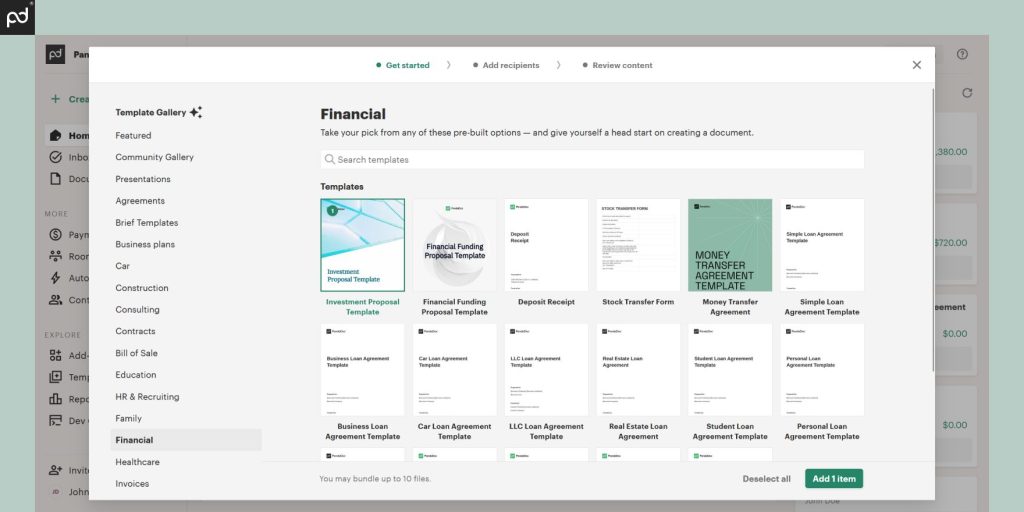
2. Assign roles to all stakeholders so they can have visibility into the document and collaborate in real-time.
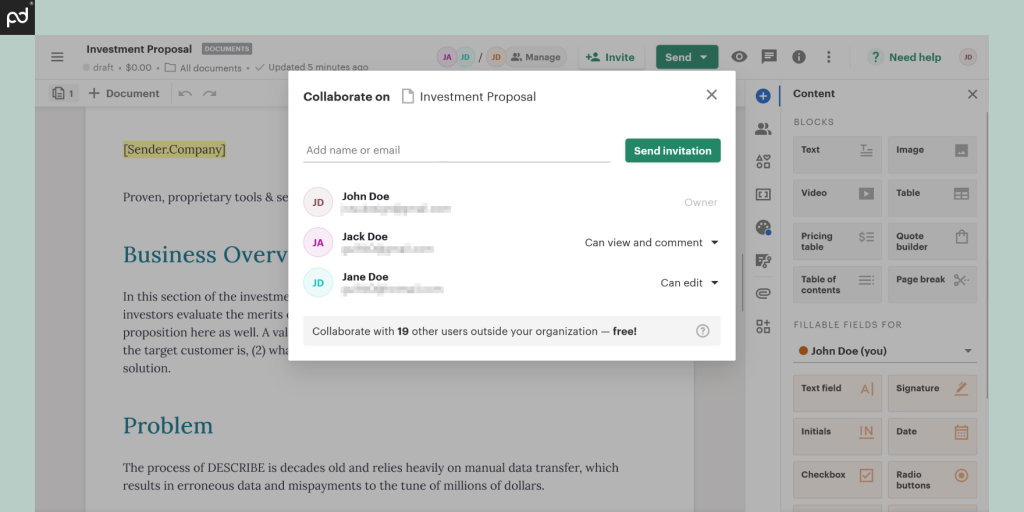
3. Set up an audit trail.
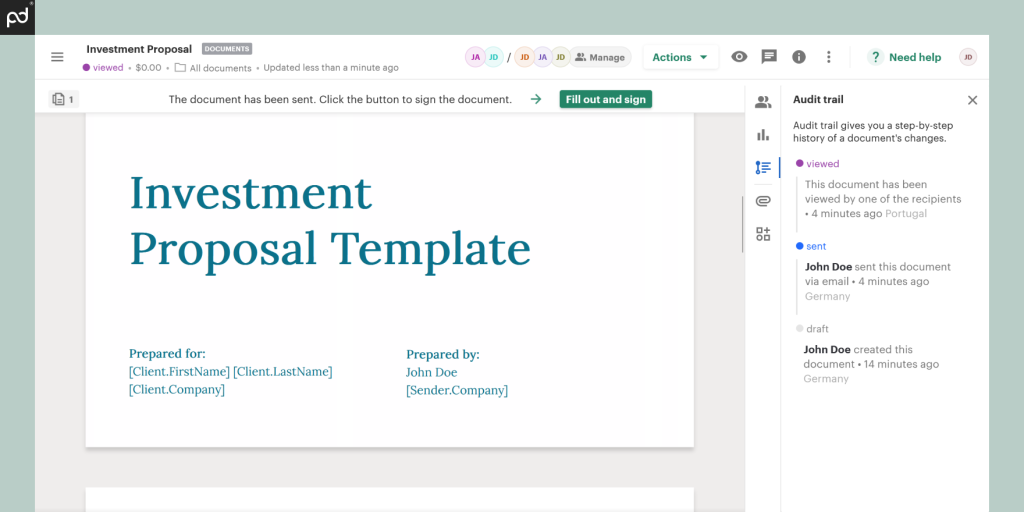
4. Collect e signatures and send follow-up reminders to stakeholders to remind them to sign.
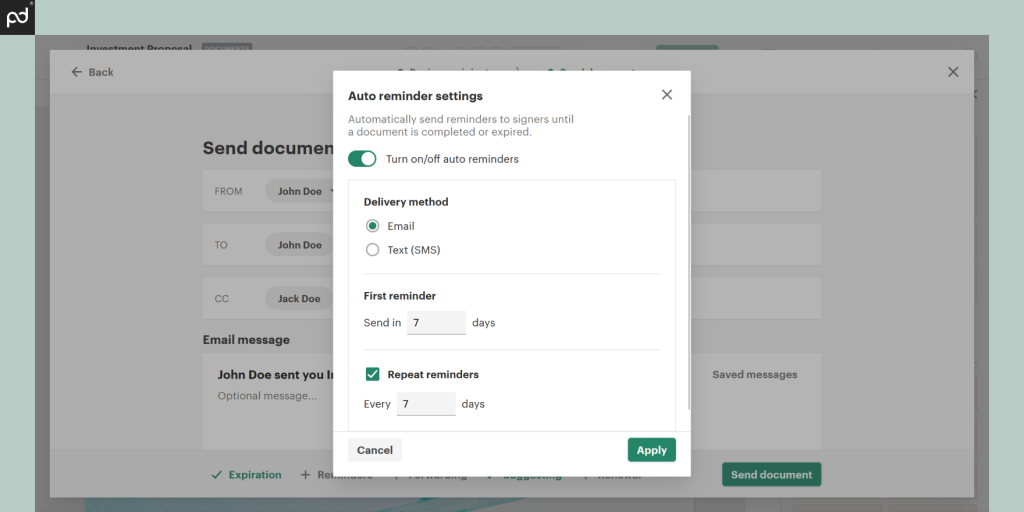
5. Safely store, manage, and review your financial documents using PandaDoc’s storage solutions.
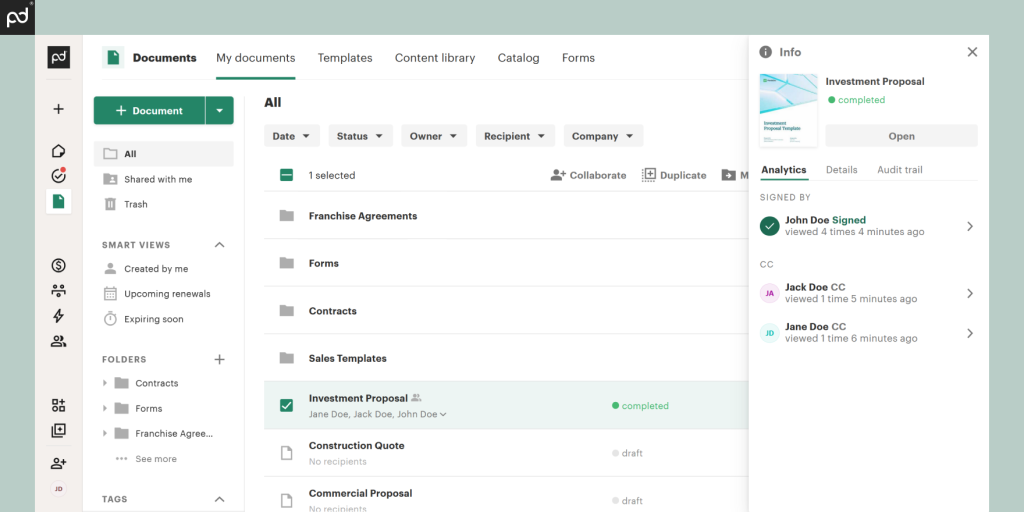
What’s next for financial document automation?
An innovative financial contract management can help you draft, edit, negotiate, search, sign, and store your contracts faster.
Not to mention financial contract management systems powered by AI can analyze extensive data sets to detect errors, discrepancies, and irregularities within contracts, thereby minimizing error risks and ensuring accuracy and compliance.
Set up an automation process, and your finance team will sparkle.
Finally, for the crystal ball moment
Looking ahead, it’s tempting to wonder where our industry will be in ten years, though AI hasn’t quite mastered the crystal ball just yet. But let us share our predictions.
Right now, everything from reviewing to scheduling contracts is a manual affair, driven by human effort. But looking ahead, the landscape of financial contract management will change dramatically.
Intelligent systems, machine learning, and AI will streamline every step of the process — from creating and reviewing contracts to generating subsequent documents.
Despite this automation, human input will remain essential. We’ll still need human expertise to assess risks and guide critical decisions that keep things moving forward.
In conclusion, yes, AI will turbocharge efficiency, but the human touch will always be the key to steering through any choppy waters.
For help in organizing your financial documents, try PandaDoc today.
Disclaimer
PandaDoc is not a law firm, or a substitute for an attorney or law firm. This page is not intended to and does not provide legal advice. Should you have legal questions on the validity of e-signatures or digital signatures and the enforceability thereof, please consult with an attorney or law firm. Use of PandaDoc services are governed by our Terms of Use and Privacy Policy.
